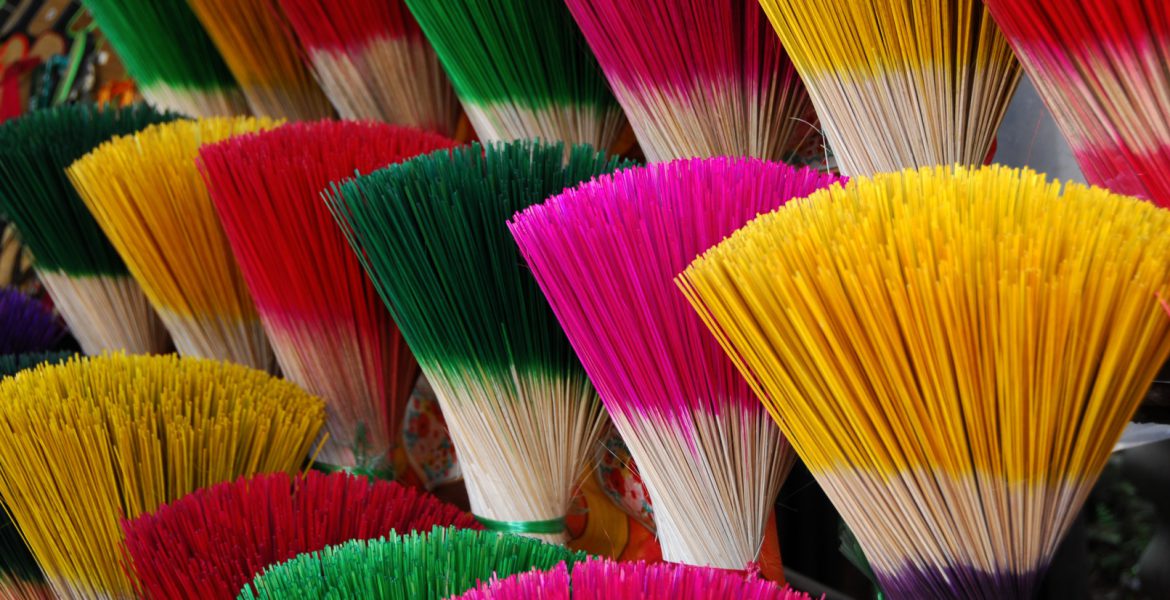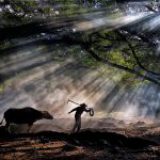Technology changes with time, but the fundamentals and recipes in photography remains. This article was first published in 2006, revised in 2018
“Art is the imposing of a pattern on experience, and our aesthetic enjoyment is recognition of the pattern.”Alfred North Whitehead (1861-1947), English philosopher and mathematician. Dialogues, June 10, 1943.
Pattern is a recurring set of events or objects which repeat in a predictable way. Pattern is one of the Design Elements used in Visual Arts. Seasoned photographers will look out for Pattern in their quest for new images. It can be the tiles on the floor, the veins of the leaves, the neatly arranged rows of shoes in the kindergarten or even the rows of long shadows created by the pillars in the late afternoon. The photographers’ obsessions for patterns can be evident in some of the world’s greatest images.
One need not be an expert in photography to be able to identify patterns from their surroundings. To take nice pictures of the patterns, one needs to equip oneself with the necessary basic photography knowledge as well as with the right equipment. For many beginners, some of the common problems faced will include:
- Camera or subject shake
- Identify the main subject
- Messy background
- Unsure of which angle to adopt
In many cases, many beginners overlook the distracting objects in the background which can disrupt the pattern or draw the viewers’ attention away from the pattern. If at all possible, it is usually good to avoid having the background in the image. One quick way to solve this problem is to either move yourself or if you can, try to re-arrange the subjects. Should the background cannot be avoided in the image, try to have a simple background.
Another common problem faced by photographers is the lack of ideas as to what angle and composition to use to shoot the pattern. Whether to focus on one part of the pattern and render the rest out of focus, or shoot directly head on and have all the patterns sharp, or shoot from an angle, these often leave the photographers with so many options to choose from. It is good to spend some time exploring the various angles. Experiment with the various angles and shoot more, especially if the pattern is nice, shoot both horizontally and vertically. If the results are unsatisfactory, you can always delete the images later.
Poor lighting condition and use of low ISO which results in slow shutter speed is the main culprit for camera and subject shake. If the subject is stationary, a good tripod will be useful in preventing camera shake. If you are shooting handheld, it is good to achieve a shutter speed of at least 1/(focal length).
Equally important is the ability to appreciate the quality of light at different times of the day as well as the weather condition. Mid day sun is usually avoided to prevent having hotspot on the subjects. Early morning and late afternoon often produces good lighting that light up the subjects nicely. Even on a cloudy day, the flat lighting can also help to produce some modest images. Hence, do not discount the possibility of photographing nice images even on a cloudy day.
Some Tips:
- Be conscious of your surrounding where you can find patterns. It can be closer to you than you can imagine.
- Try various angles (top, low, eye level).
- Any lens can shoot pattern, including the fisheye lens.
- Avoid clutter in the background. Keep it simple.
- Use of lighting to create visual impact.
- If need be, increase ISO to minimize camera shake.
With the tips above in mind as well as the case studies below, enjoy feasting your eyes in a world of pattern.
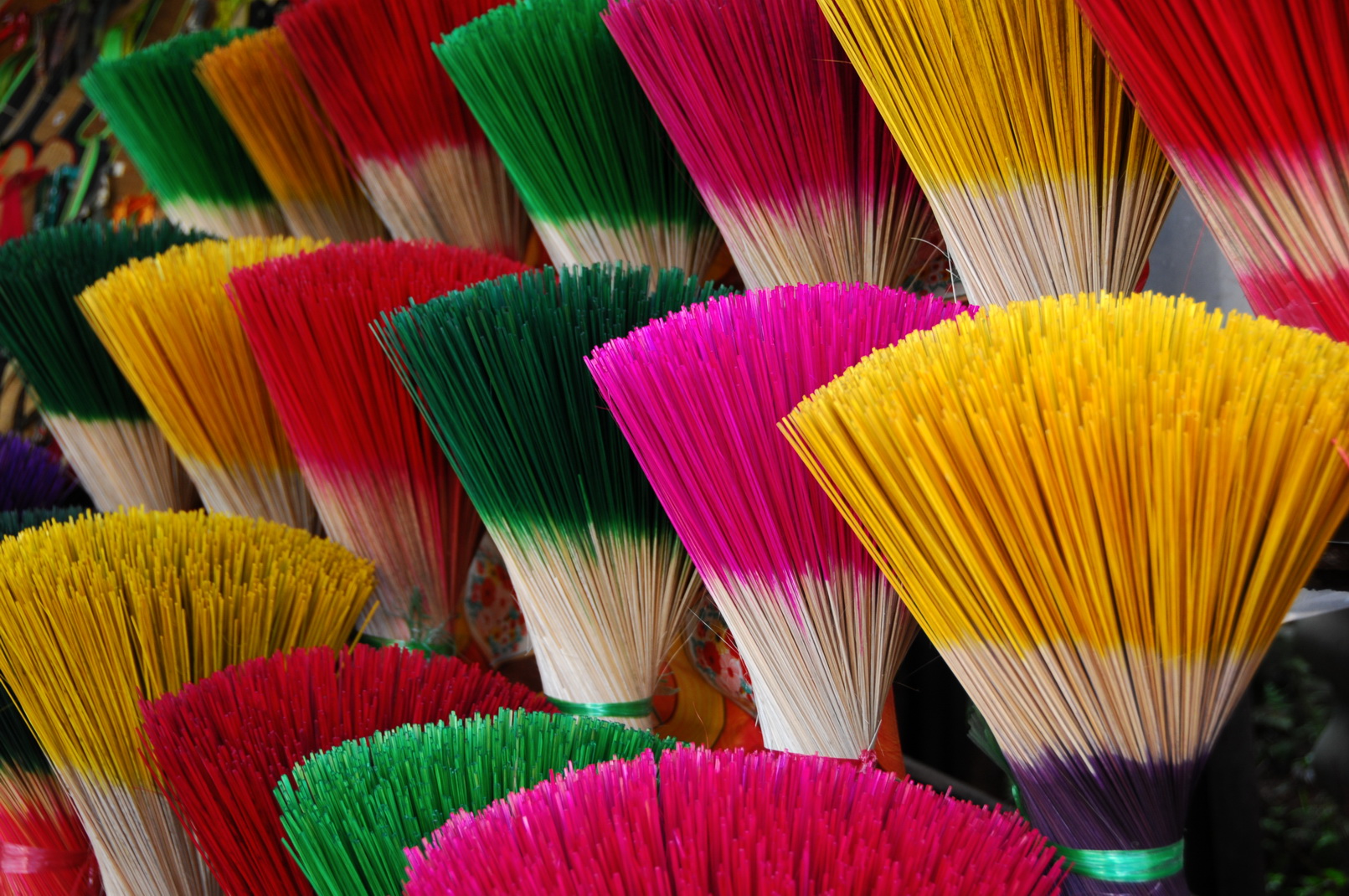
Matrix metering, Daylight White Balance, ISO200, Aperture Priority Mode, Shutter speed 1/40s, Aperture f4.8, 18-200mm
What attracted me are the colours and the way the incense are neatly arranged in this roadside incense stall in Vietnam. I left my tripod in the bus and the lighting is a bit flat that day. I switch on the Anti-Shake on my lenses and set the ISO at 200. Though I did not manage to get 1/(focal length) for the shutter speed, the Anti-Shake helps. (To minimise camera shake, it is good to have a shutter speed at least 1/focal length). I had to position my angle to minimise the background clutter and put my attention to just the incense sticks.
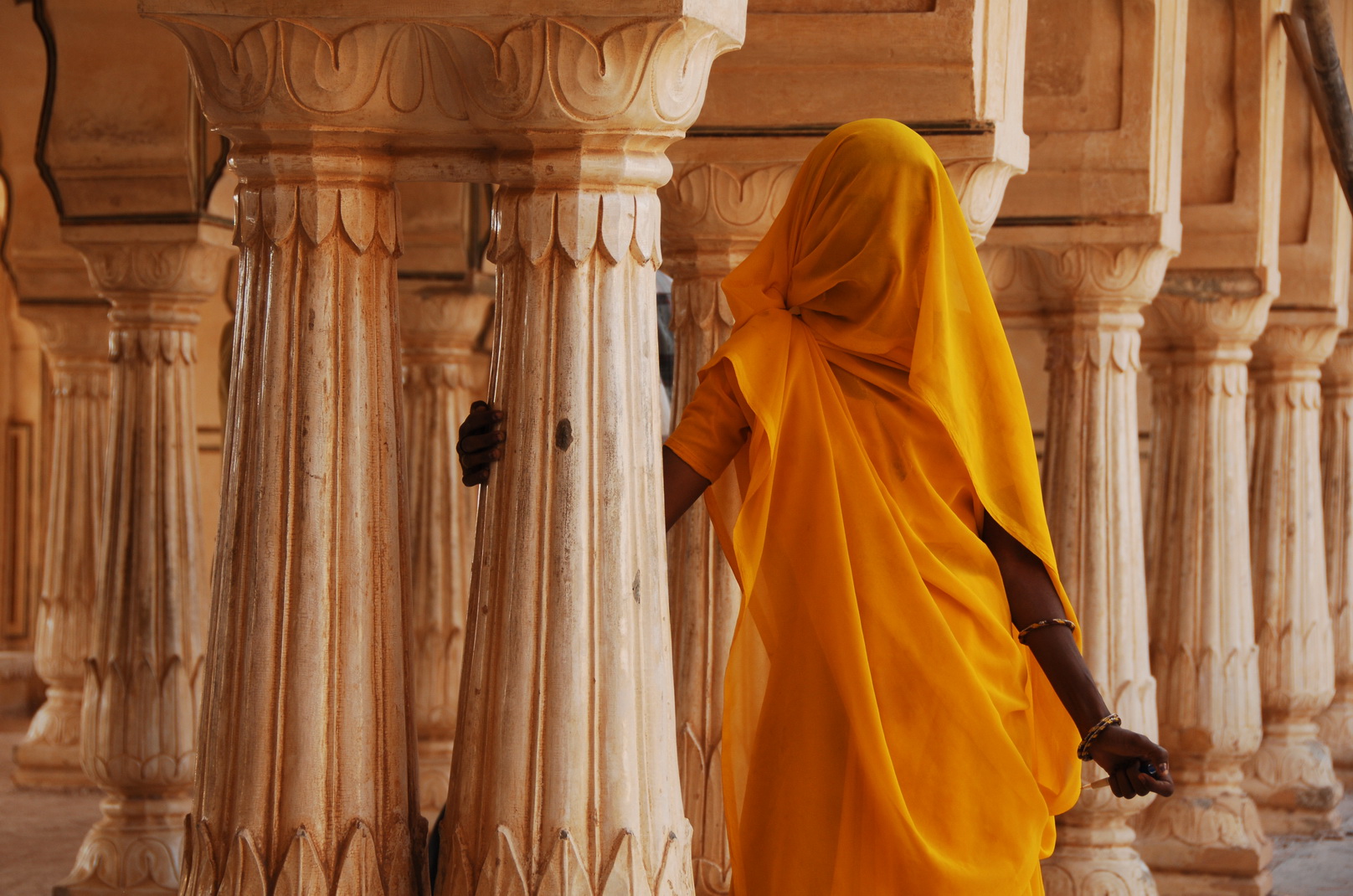
Center Weighted metering, Daylight White Balance, ISO200, Aperture Priority Mode, Shutter speed 1/250s, Aperture f5, 18-200mm
The repetitive pillars caught my attention but there was no main subject. I asked my local guide to source for some possible main subject and somehow we managed to find a few workers who were dressed colourfully. Got one of them to pose. Well, it is a custom for them not to reveal their faces, and we respected that.

Centre Weighted metering, Daylight White Balance, ISO400, Aperture Priority Mode, Shutter speed 1/45s, Aperture f6.3, 18-200mm
Try to be observant and look at things around you. When you were walking in some alleys, or waiting for your drinks to be served in a coffeeshop, some pictures can be taken. I saw this crate of empty bottles and took this shot right from the top. Cropping was done after that to remove any unwanted background.
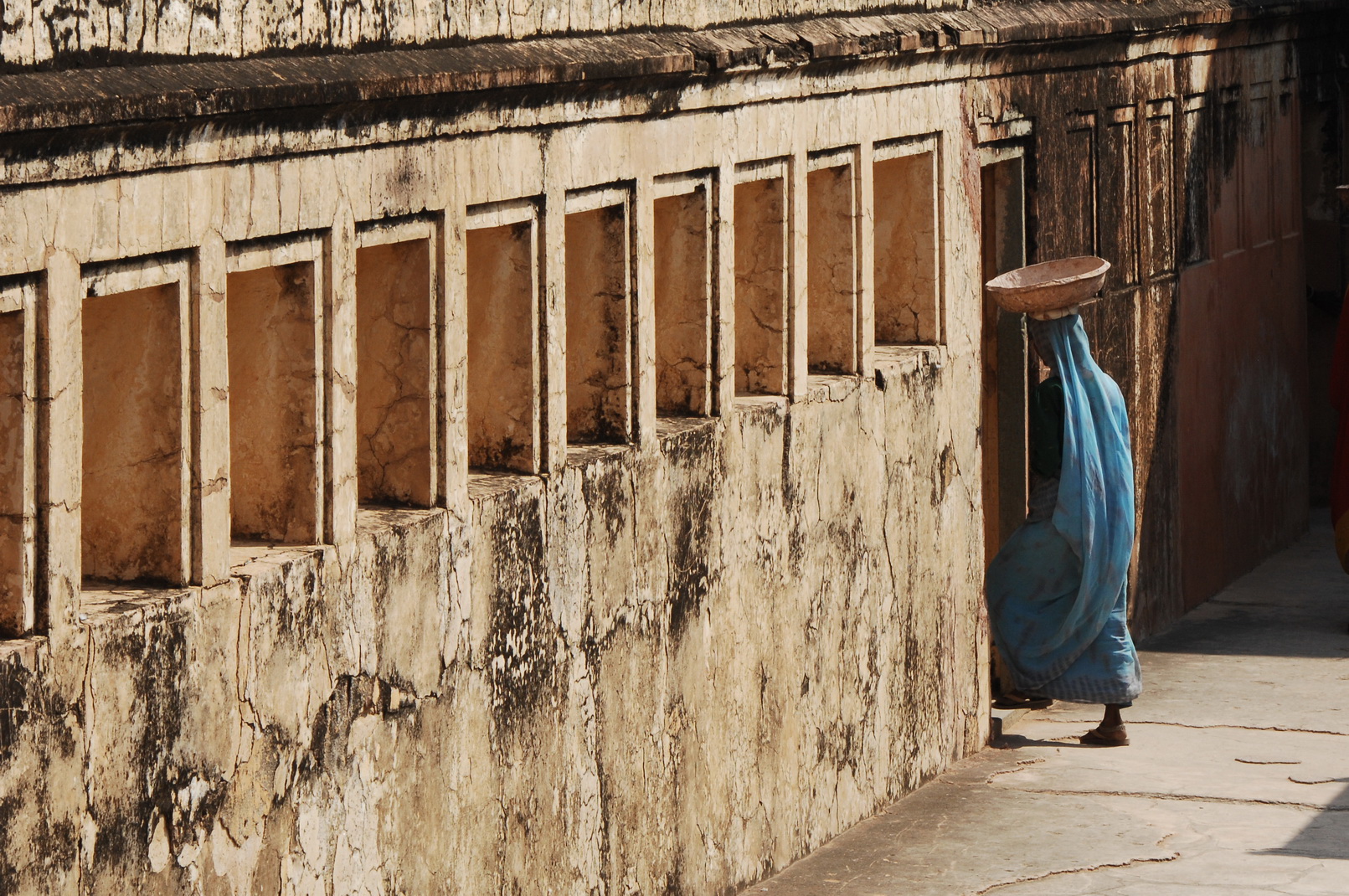
Centre Weighted metering, Daylight White Balance, ISO250, Program Mode, Shutter speed 1/400s, Aperture f10, 18-200mm
I saw the row of windows in this old fort in India and I tried to figure out how to approach this shot. I looked around and saw a few workers ferrying baskets of construction materials. I took my position and waited. With everyone of them in the frame, the shot can be a bit messy but nonetheless I shot a couple of shots first. The last one in the group was in blue and I thought to keep the picture simple, I just need one subject. I waited for the rest of the group to clear and when she was left alone, I fired away.
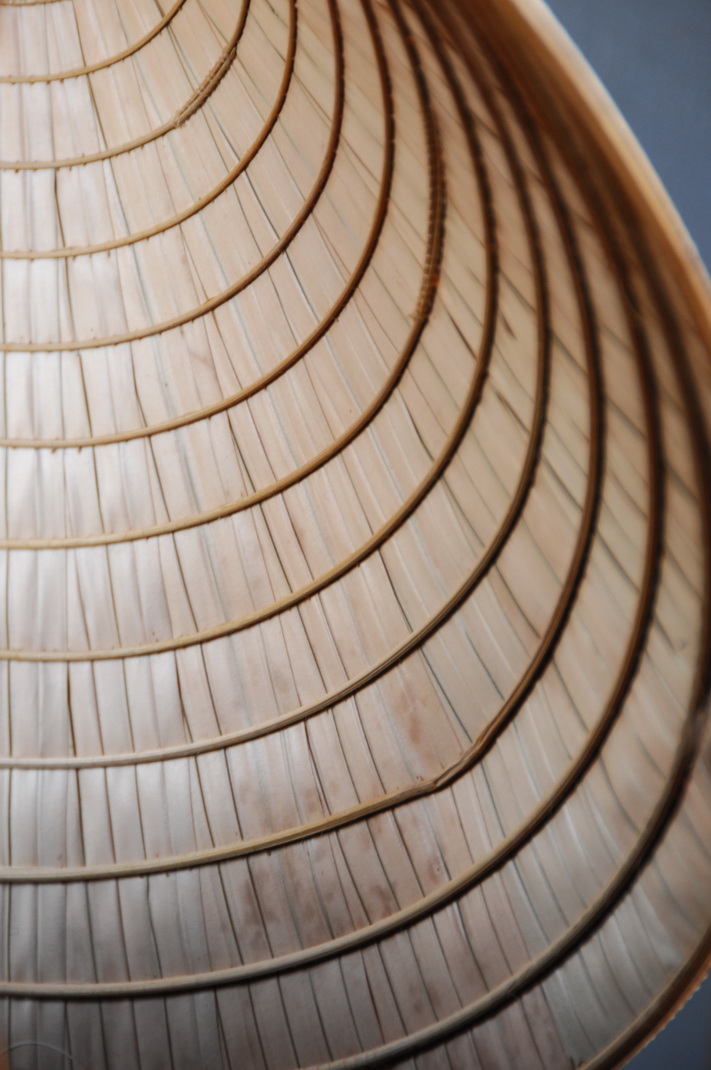
Matrix metering, Daylight White Balance, ISO250, Aperture Priority Mode, Shutter speed 1/40s, Aperture f5.6, 18-200mm
It may be hard to guess what this is. I was attracted by the lines. This was the inside of the traditional conical hat of the Vietnamese, shot at an angle. Some cropping was done to remove the unwanted areas. The Anti-shake helps to minimise camera shake.

Centre Weighted metering, Daylight White Balance, ISO640, Aperture Priority Mode, Shutter speed 1/125s, Aperture f3.8, 18-200mm
This is one of my most interesting encounters where I had a chance to photograph the Cao Dai temple in Vietnam. It is an interesting fusion of a few religions. I was also fascinated by the beautiful tiles on the floor where the devotees were prostrating.

Matrix metering, Daylight White Balance, ISO200, Aperture Priority Mode, Shutter speed 1/640s, Aperture f4, 18-200mm
Stacks of incense were arranged in this manner by the roadside in Hue, Vietnam. To be able to see the repetition of the circular arrangement, I chose to shoot from a top angle. I had to tip toe and lean forward, at the same time, avoid casting my shadow on the incense.

Centre Weighted metering, Daylight White Balance, ISO500, Aperture Priority Mode, Shutter speed 1/50s, Aperture f5, 10.5mm fisheye
Symmetry and patterns can often be seen in the architecture of the buildings. From the inside of the post office in Saigon, Vietnam, I experimented with the fisheye lenses to catch as much of the pattern as I could. The distortion at the side added a different touch to the image.
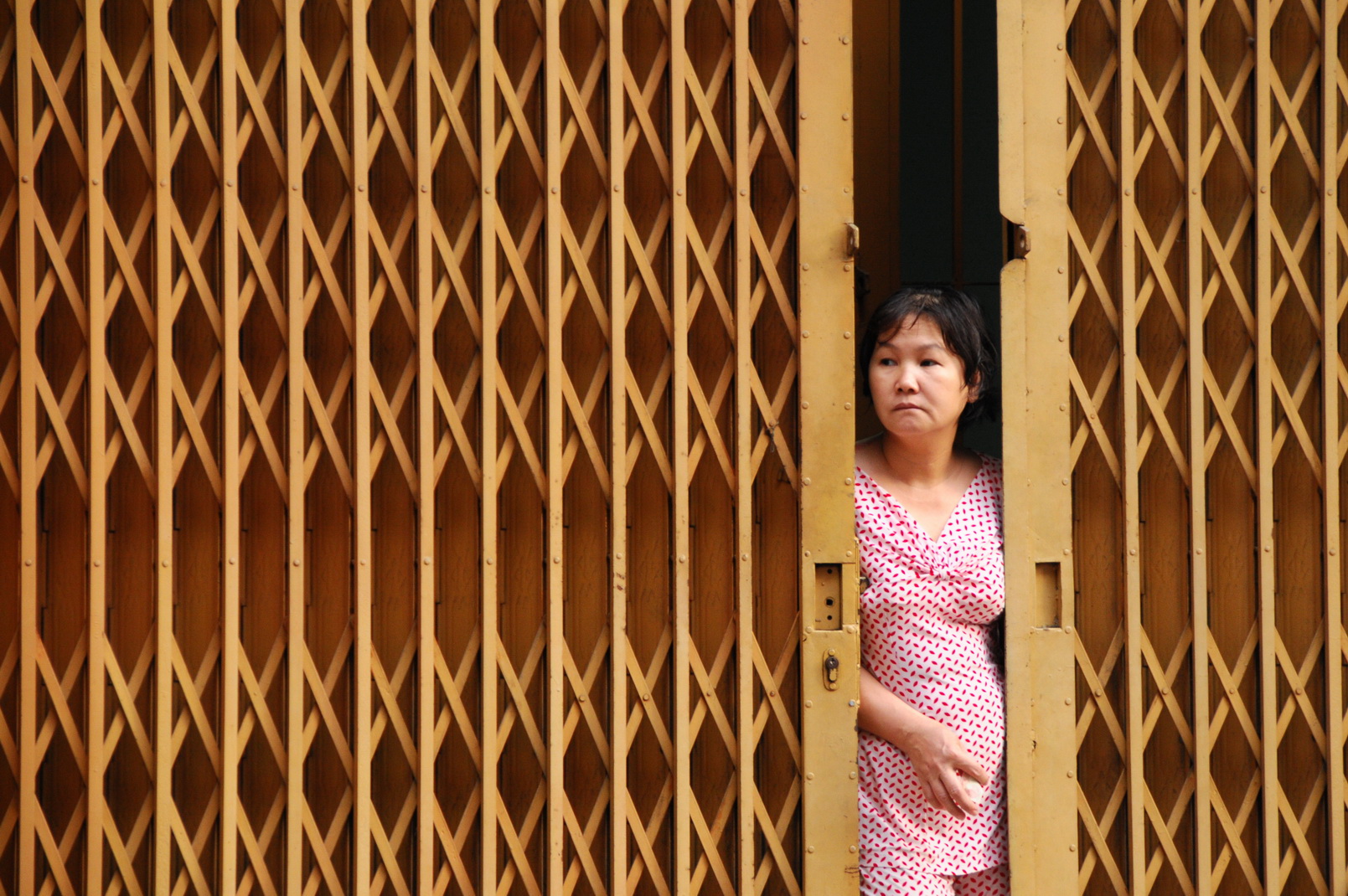
Matrix metering, Daylight White Balance, ISO500, Aperture Priority Mode, Shutter speed 1/80s, Aperture f5.3, 18-200mm
We were walking along the streets of Saigon on our way to a temple to do some shots. Along the way, we noticed that many of the shops were closing for the evening. The sliding gates caught my attention and I was hoping that one of the shops’ gates could open partially with someone peeking out from the shop. And somehow, it happened and I fired away.
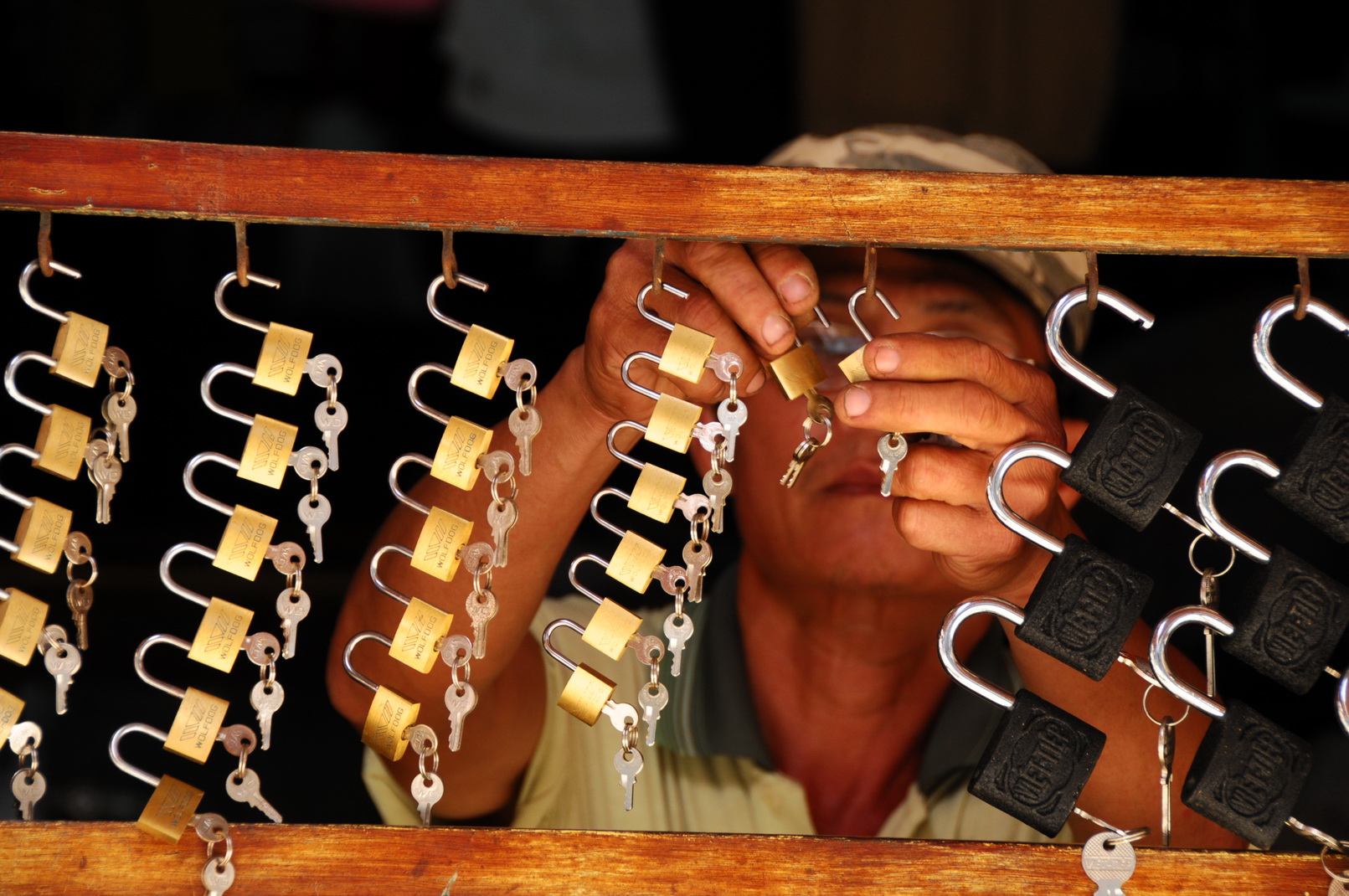
Matrix metering, Daylight White Balance, ISO320, Aperture Priority Mode, Shutter speed 1/80s, Aperture f5.3, 18-200mm
This is a roadside stall in Vietnam selling padlocks. The padlocks are locked together to form an interesting pattern. The stall owner was adding more padlocks to the chain of locks and this provides more interesting story content compared to just shooting the padlocks alone.
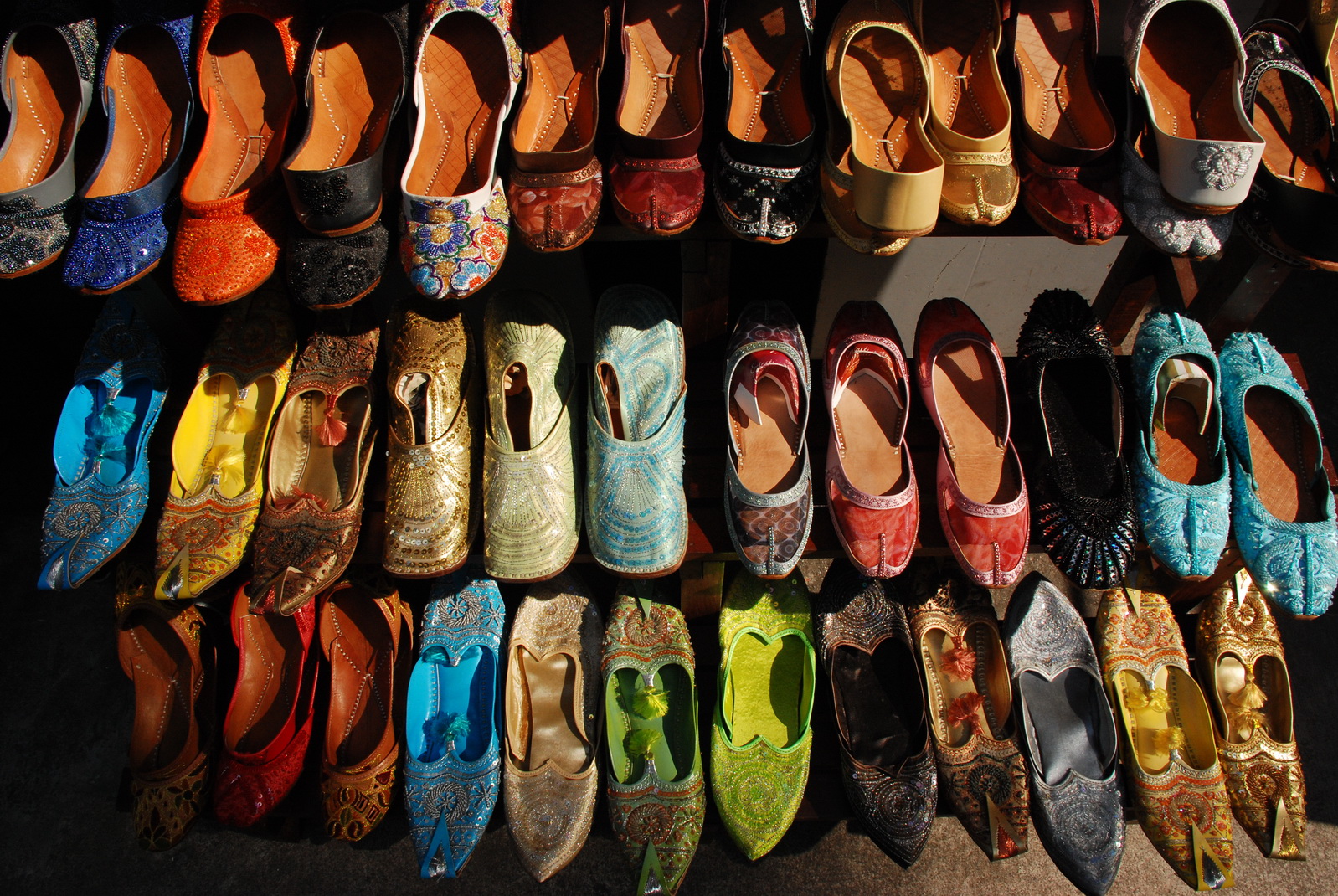
Centre Weighted metering, Daylight White Balance, ISO400, Program Mode, Shutter speed 1/400s, Aperture f10, 18-200mm
These colourful shoes in Singapore’s Little India are neatly arranged in rows. The evening light was subtle and lit up the shoes with shadows and highlights. Well, if the shoes were not arranged neatly, you can help to arrange them. Actually, this was what I did!

Centre Weighted metering, Daylight White Balance, ISO400, Program Mode, Shutter speed 1/400s, Aperture f10, 18-200mm
It is good to have a main subject in the midst of the pattern. In this case, I choose to shoot at an angle and use the padlock as my main subject. As usual, I will avoid mid day sun and choose late afternoon as the lighting is not so harsh.
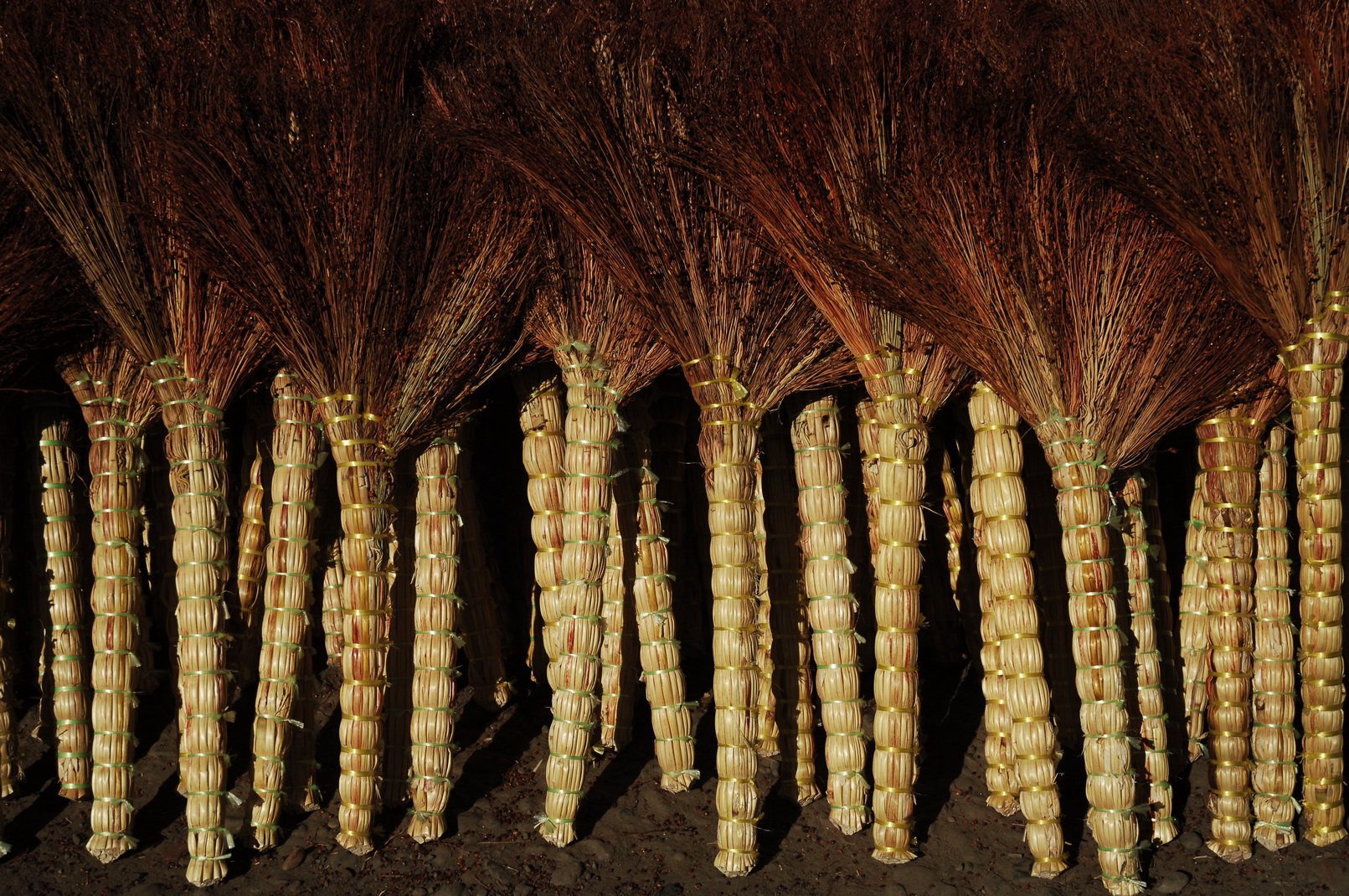
Centre Weighted metering, Daylight White Balance, ISO250, Aperture Priority Mode, Shutter speed 1/5000s, Aperture f5, 18-200mm
“Brooms for sale. Brooms for sale.” The makeshift stall owner shouted as she peddled her wares. The late afternoon lighting was good and the brooms were arranged side by side. Ignoring the shoutings by the stall owner, I photographed the brooms from various angles.

Matrix metering, Daylight White Balance, ISO200, Program Mode, Shutter speed 1/250s, Aperture f7.6, 18-200mm
Look around you, I am sure you can find something interesting in some neighbourhood. This flat in downtown Selegie Road attracted my attention whenever I was around the area. The red balconies form an interesting pattern. Despite the fact that I often pass by this area, there is a tendency for procrastination to shoot this pix at a later date. I finally decide to walk to the area to shoot the picture.
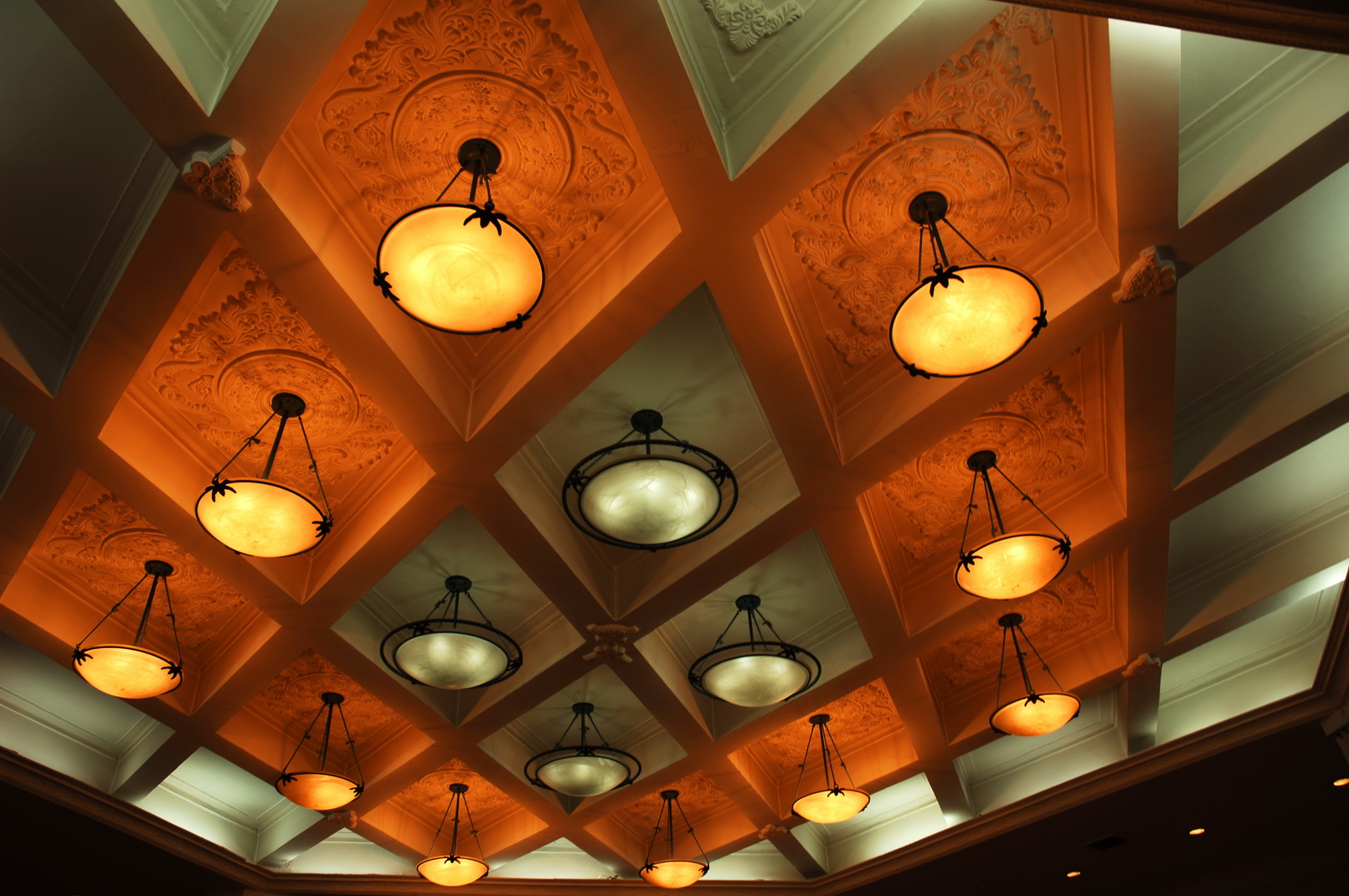
Matrix metering, Auto White Balance, ISO125, Aperture Priority Mode, Shutter speed 1/20s, Aperture f5.6, 18-200mm
When overseas, I always have a habit of bringing my camera to wherever I go, even to dinner or toilet! You can be caught by surprise some interesting subject or photography opportunities. The ceiling of this restaurant looks interesting so I took some shots while enjoying my meal at the same time.
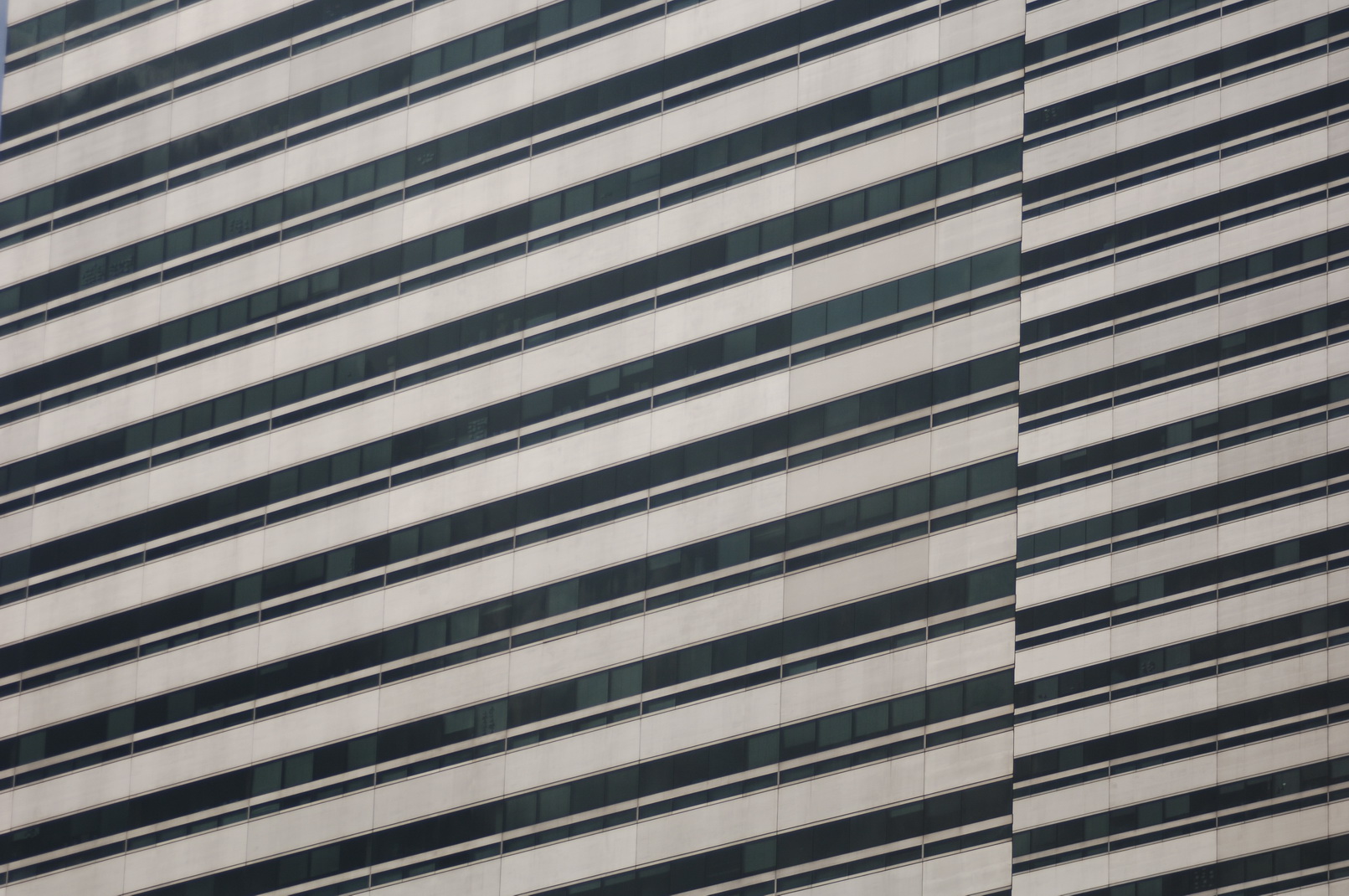
Centre Weighted metering, Daylight White Balance, ISO125, Aperture Priority Mode, Shutter speed 1/8000s, Aperture f2.8, 80-200mm
These two interesting buildings in Beach Road, Singapore look like 2 slices of cakes. When viewed from certain angles, you can be treated with some visually powerful composition of repetitive lines.

Matrix metering, Daylight White Balance, ISO200, Aperture Priority Mode, Shutter speed 1/250s, Aperture f4, 18-70mm
The monks sat in neat rows as they listened to the teachings of their teacher. I have to be careful in not photographing the mess in the background by choosing a high angle. If I had the opportunity of shooting from the tree top, it would be a unique angle overlooking them from the top.
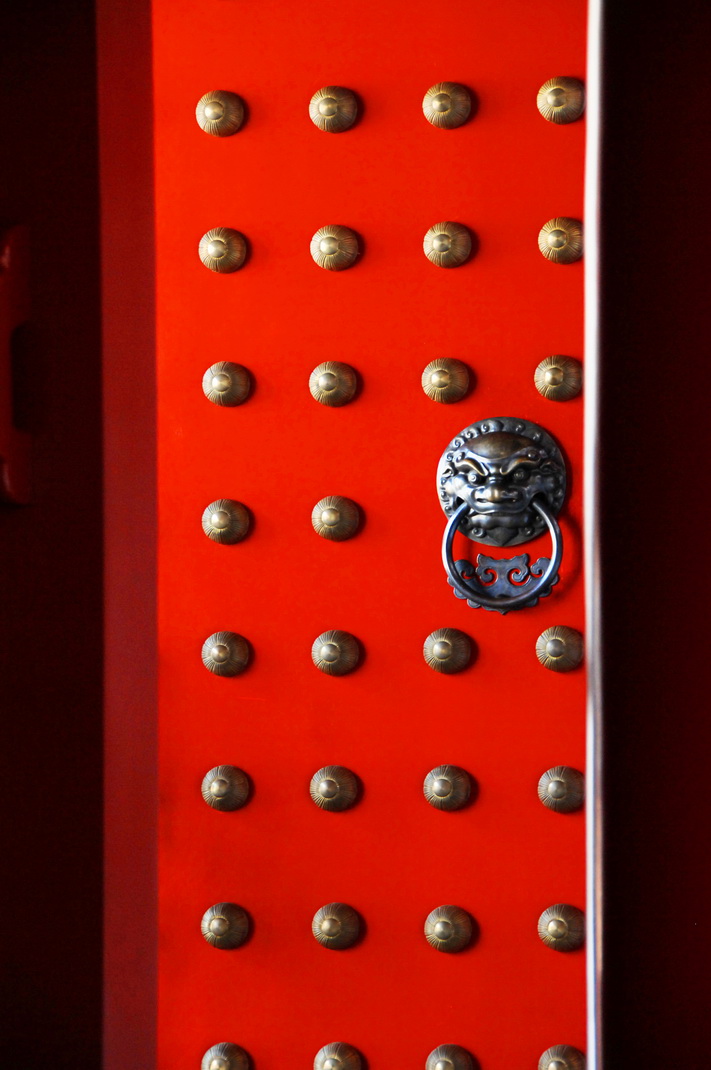
Centre Weighted metering, Daylight White Balance, ISO640, Program Mode, Shutter speed 1/30s, Aperture f5.3, 18-200mm
This is a combination of framing and composing patterns. This door of the Buddha Tooth Relic Temple in Singapore has a very nice coat of red paint with a nice door knob. To just shoot the door with the patterns and the door knob, it will be a bit boring. I managed to choose an angle where the red door is framed by another door and a wall.

Centre Weighted metering, Daylight White Balance, ISO400, Aperture Priority Mode, Shutter speed 1/750s, Aperture f5, 18-200mm
One of the icons of Singapore, the Esplanade is probably one of the most photographed subjects besides the Merlion. Different time of the day, different quality of light, different angles, shall yield many different pictures of this “spike studded” architectural masterpiece.
